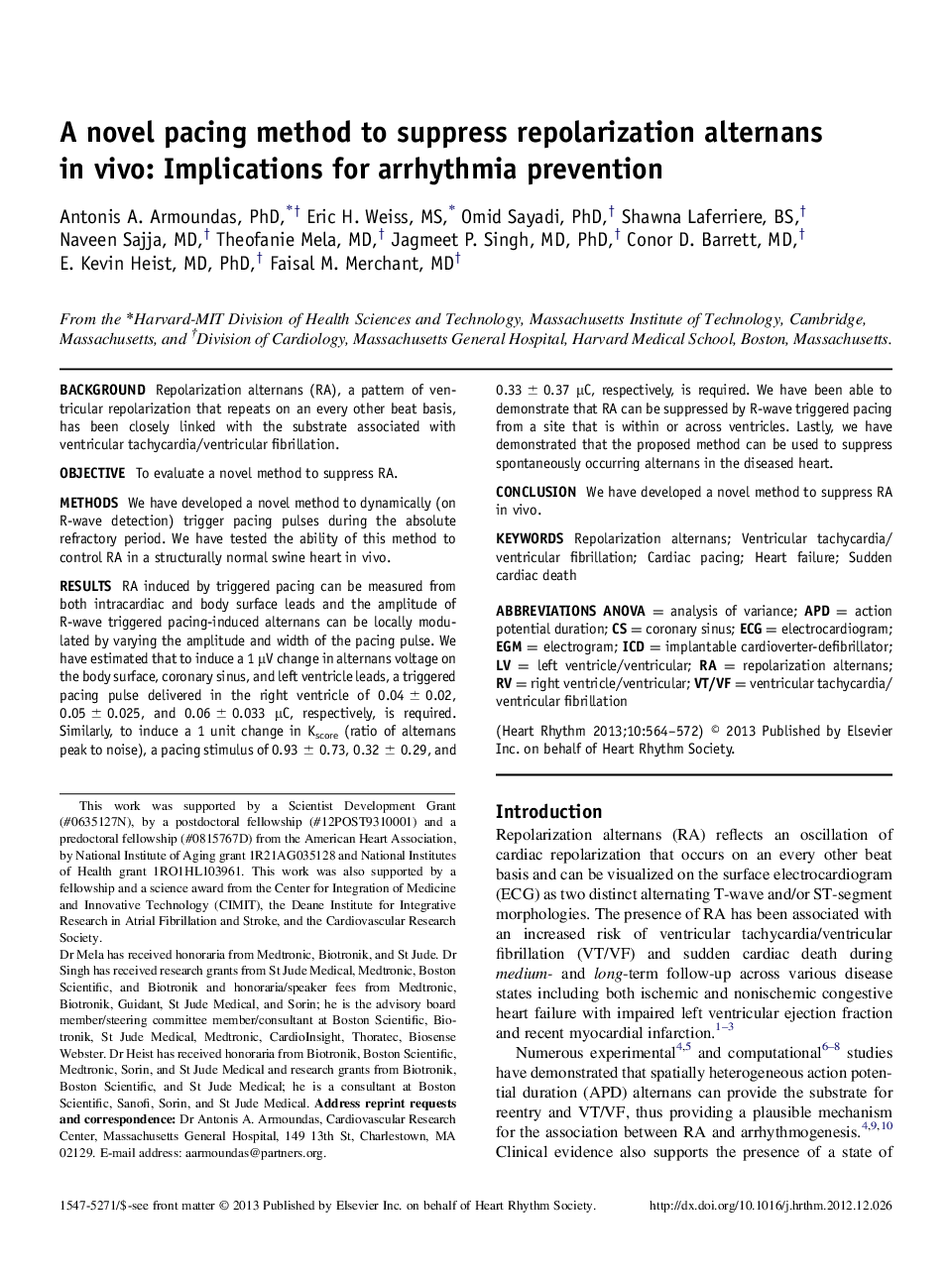| Article ID | Journal | Published Year | Pages | File Type |
|---|---|---|---|---|
| 2922424 | Heart Rhythm | 2013 | 9 Pages |
BackgroundRepolarization alternans (RA), a pattern of ventricular repolarization that repeats on an every other beat basis, has been closely linked with the substrate associated with ventricular tachycardia/ventricular fibrillation.ObjectiveTo evaluate a novel method to suppress RA.MethodsWe have developed a novel method to dynamically (on R-wave detection) trigger pacing pulses during the absolute refractory period. We have tested the ability of this method to control RA in a structurally normal swine heart in vivo.ResultsRA induced by triggered pacing can be measured from both intracardiac and body surface leads and the amplitude of R-wave triggered pacing-induced alternans can be locally modulated by varying the amplitude and width of the pacing pulse. We have estimated that to induce a 1 μV change in alternans voltage on the body surface, coronary sinus, and left ventricle leads, a triggered pacing pulse delivered in the right ventricle of 0.04±0.02, 0.05±0.025, and 0.06±0.033 μC, respectively, is required. Similarly, to induce a 1 unit change in Kscore (ratio of alternans peak to noise), a pacing stimulus of 0.93±0.73, 0.32±0.29, and 0.33±0.37 μC, respectively, is required. We have been able to demonstrate that RA can be suppressed by R-wave triggered pacing from a site that is within or across ventricles. Lastly, we have demonstrated that the proposed method can be used to suppress spontaneously occurring alternans in the diseased heart.ConclusionWe have developed a novel method to suppress RA in vivo.
